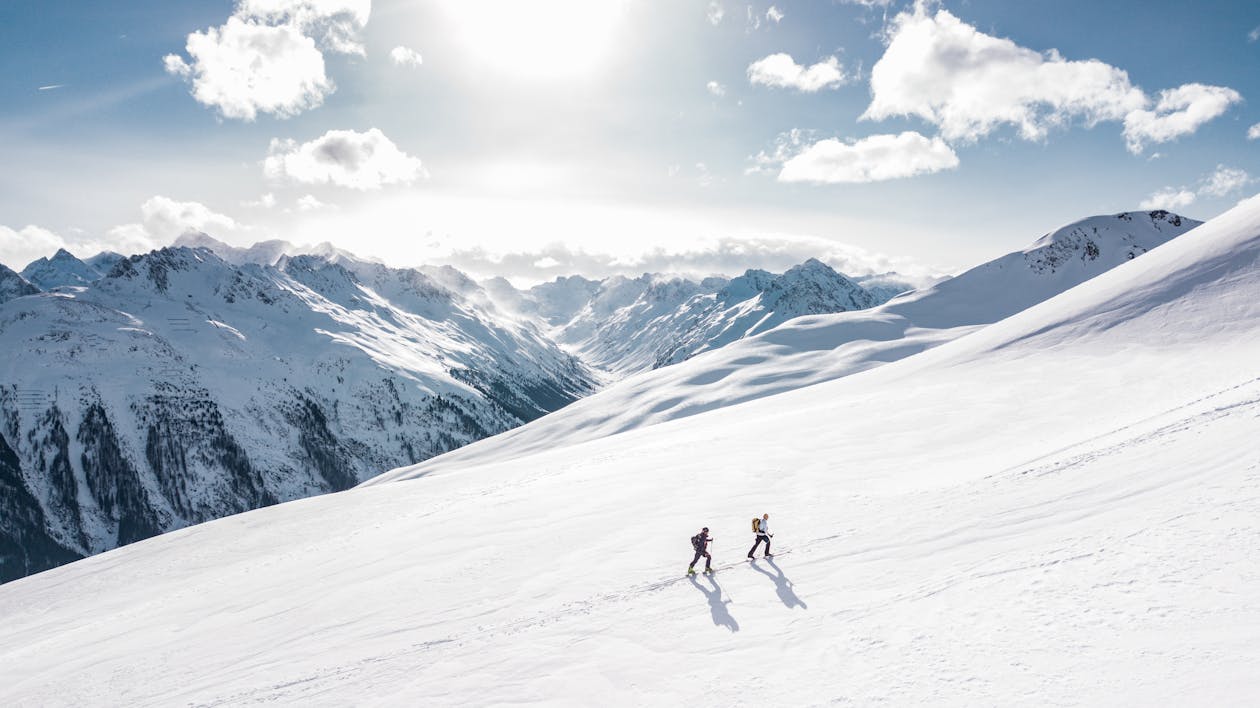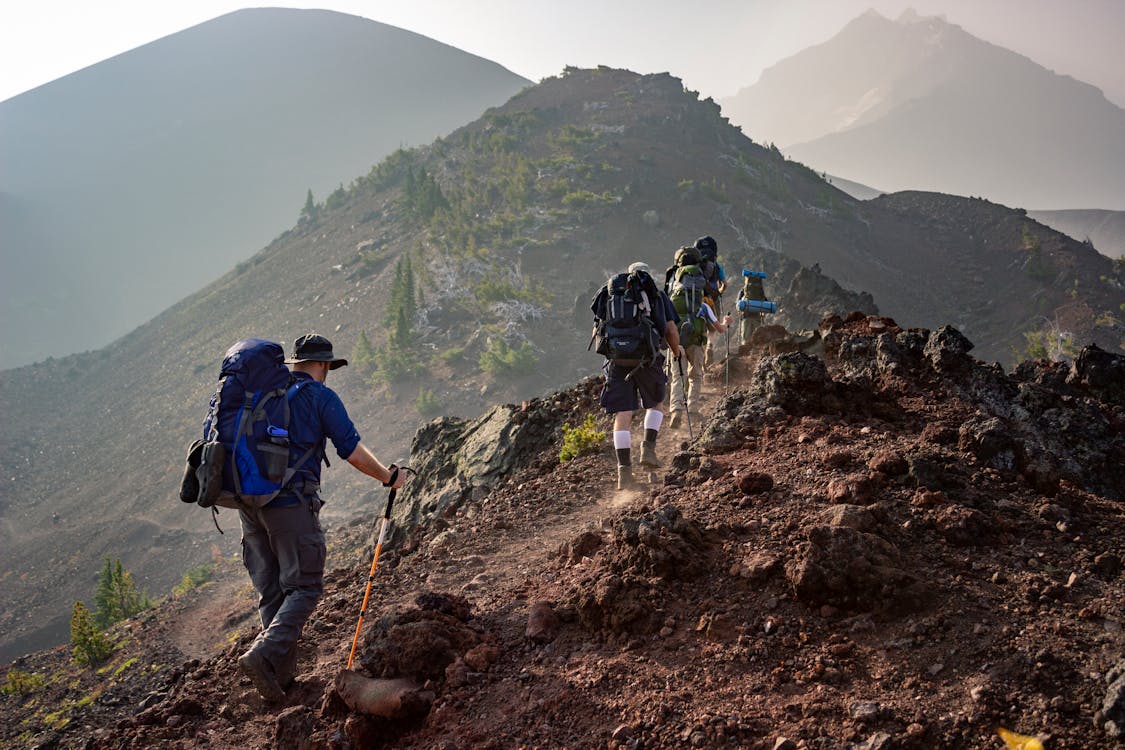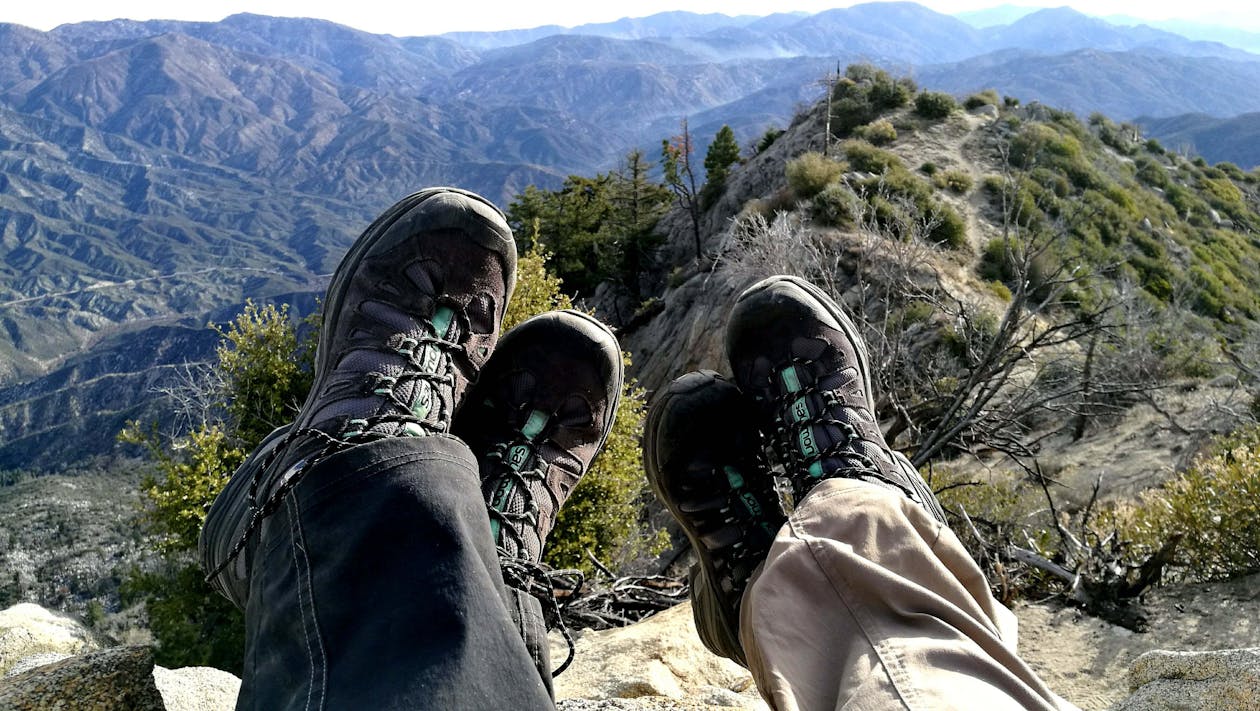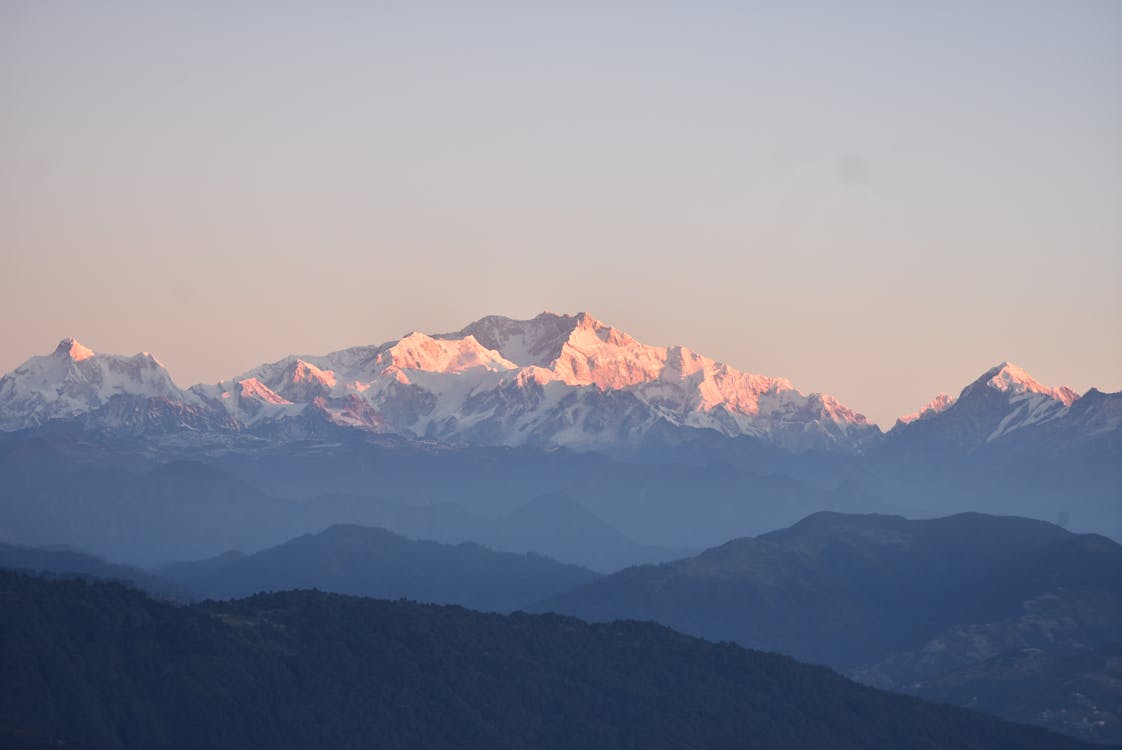Embarking on a backpacking trip for the first time is an exciting and invigorating experience. It offers an opportunity to reconnect with nature and test your physical limits. Before strapping on your backpack and hitting the trails, it’s important to plan ahead and prepare for the journey ahead.
Consider factors like the length of your trip, the terrain you’ll be traversing, and the weather conditions you’ll encounter.
With the right gear, mindset, and preparation, backpacking can be a fulfilling and unforgettable experience that you’ll treasure for a lifetime. So lace up those boots, grab your backpack and hit the trails, and get ready to discover the beauty and wonder of the natural world through backpacking.
Backpacking, Mountaineering and Rock Climbing, What Does It All Mean?
For those yearning to explore the great outdoors, backpacking, mountaineering, and rock climbing may seem like the ultimate adventures. But, what do they all mean?
Backpacking is all about carrying a pack and hiking over uneven terrain for an extended period of time, while mountaineering is a more advanced version that involves navigating snowy peaks and glacier crossings.
Rock climbing, on the other hand, focuses on scaling cliffs and boulders with ropes, harnesses, and specialised equipment.
Each activity requires different skills, experience levels, and equipment. They all provide a thrilling way to connect with nature and challenge oneself to push personal limits. So pick your adventure and get ready to discover what lies beyond the horizon. Just don’t forget to research, start small, brush up on those technical skills and most importantly, keep safe!
Different Mountain Climbing Climates

Backpacking is a thrilling outdoor activity that invigorates the senses with fresh air, beautiful landscapes, and a challenging trek through diverse climates.
One of the most important aspects of backpacking is preparing for the climate and environment. There are different types of backpacking climates such as tropical, arctic, desert, and temperate. Backpacking in the tropical climate can be an exciting adventure that requires bug repellents, sunscreen, and proper hydration. In the Arctic climate, backpackers must prepare for below-freezing temperatures and the possibility of snow, so they need to carry appropriate gear to stay warm and dry.
Backpacking in the desert climate, such as Joshua Tree National Park in Alaska, can be a daunting challenge as the heat and dust can quickly dehydrate hikers.
Temperate climates may be more pleasant but still require preparation for sudden temperature drops and inclement weather. No matter what environment backpackers are exploring, it’s crucial to be well-informed, carry the right gear, and properly prepare in order to fully experience the adventure and stay safe on the trail.
Know How To Contact Mountain Rescue
One essential aspect of mountain safety is knowing how to contact mountain rescue. In the event of an accident or unexpected situation, having a way to call for help can make all the difference.
It’s important to research and store the local emergency hotline number in your phone and to have a backup plan in case you lose service or your phone dies. Some areas may have specific mountain rescue teams that you can contact directly, so it’s also helpful to have that information on hand.
But what happens if there’s a language barrier? Don’t panic. In these situations, it’s important to remain calm and resourceful. If you or someone you know needs help but there is a language barrier, the best thing to do is try to find someone who speaks both your language and the language of the rescuers. If that’s not possible, use basic hand gestures or drawings (only if possible) and try to communicate as clearly as possible. You can also try Google translate too or another translating program you may have on hand.
Remember, the rescue team’s priority is to get you to safety, so they will do everything they can to help, even if there is a language barrier.
With a little preparation, you can feel confident and safe during your outdoor adventures.
Do Not Skip Travel Insurance
Traveling can be an exciting and adventurous experience, especially when it involves backpacking or mountaineering. However, it’s crucial to recognise the importance of travel insurance to ensure your trip remains safe and worry-free.
Backpacking and mountaineering typically involve physical activities that come with the risk of injury and accidents, making it essential to protect yourself in case of emergencies. Travel insurance provides coverage for unforeseen events such as medical emergencies, trip cancellations, or theft, making it an essential investment for any backpackers or mountaineers. By purchasing travel insurance, you can embark on your adventure with peace of mind while enjoying the thrill of your journey.
The Blood Care Foundation

Exploring the unknown corners of the world can be an adventure unlike any other, but it can also bring unforeseen risks and dangers. That’s where the Blood Care Foundation Travel Club comes in.
This exclusive membership program provides urgent access to screened blood supplies, no matter where your travels may take you. Whether you’re trekking through remote mountains or backpacking across continents, the peace of mind that comes with having this lifeline at your fingertips is priceless. And with prices as low as £12 a month or just £60 a year, it’s an investment in your safety and wellbeing that simply can’t be beat.
Click this link here for more information on ‘The Walking Blood Bank’, it’s a very useful membership to have!
Check For Bad Weather
Weather plays a vital role in determining how enjoyable your backpacking trip will be, especially if you’re a beginner. Bright sunshine and pleasant temperatures can make your journey through the wilderness quite enjoyable.
However, if you’re caught up in heavy rain or face a sudden drop in temperature, the situation can quickly become challenging. Unpredictable weather and extreme temperatures can affect not only your health, but also your gear. That said, planning ahead and packing appropriately for the weather conditions can make all the difference. Checking the weather forecast is a great way to ensure you’re prepared for any potential weather challenges. In any case, as a beginner, it is always advisable to err on the side of caution and stay updated with reliable weather reports before embarking on your trip.
How To Prepare For Your First Trip

There’s nothing quite like the thrill and adventure of heading out on your first backpacking trip. However, it’s important to be prepared before embarking on any outdoor excursion. Backpacking gear is also widely preferred by beginners as it is typically lightweight gear you can carry in a backpack instead of a gear intensive activity such as mountain climbing or mountaineering. With a little planning, you can ensure that your trip is safe, enjoyable, and memorable.
First and foremost, consider the location and weather conditions. Research the area you’ll be backpacking in and check the forecast for any potential hazards or inclement weather. It may also help to research and plan your trip to visit popular trails as if you get stuck or lost, there will be others there to help.
Make a packing list and be sure to bring essential items such as a first aid kit, map and compass, water filtration system, and proper clothing and footwear. Take time to physically train and get in shape for the trip, as backpacking can be physically strenuous. Finally, always let someone know your itinerary and expected return date in case of an emergency. If you can, we’d also recommend taking a local or experienced backpacker with you. With these helpful tips, you’ll be well on your way to an unforgettable backpacking adventure.
Feel Like A True Explorer By Learning Compass Skills
Mountaineering requires a set of skills that are essential to navigating the rugged terrain and unpredictable weather conditions of mountain ranges. Among these skills, using a compass can be the difference between arriving safely at a destination or getting lost in the wilderness.
A compass enables mountaineers to find their bearings, determine their current location, and chart a course towards their goal. The use of a compass to navigate the mountains requires a deep understanding of basic concepts such as magnetic declination, orienting the compass and taking reliable bearings. Good compass skills can give mountaineers the confidence to explore new territories and stay safe while doing so.
So as well as your physical preparation, it’s important to research and practice your compass skills so you don’t get lost at high altitude or along the many trails as route finding may prove difficult if it begins to get dark or bushy!
Essential Backpacking Gear For The Beginner Backpacker
Backpacking is an exhilarating way to experience the great outdoors, but it can be overwhelming for those new to the activity. While packing essential gear for backpacking can seem like a daunting task, having the right equipment can make all the difference in your trip’s success.
A sturdy backpack, a well-made tent, a sleeping bag appropriate for your destination’s climate, a reliable water filter, good quality mountaineering boots with essential traction and a lightweight stove are some of the must-have items for beginners. Remember, your backpack is your home away from home, so taking the time to properly equip yourself can ensure a more comfortable and memorable experience in the wilderness. With the right tools at your disposal, you’ll be well on your way to planning your next exciting backpacking adventure.
Research Your Route Boundaries

As a hiking and backpacking enthusiast, it’s crucial to know the ins and outs of public lands versus private lands. Public lands are owned by the government and are open to the public for recreational activities such as hiking and camping (national state parks for example would be considered public lands). These lands are typically maintained and managed by state or federal agencies, ensuring that they remain available for public use.
On the other hand, private lands are owned by individuals or corporations and may not be accessible to the public. It’s important to respect private property and obtain permission before hiking or camping on these lands.
Mountain Climbing For The Beginner
Mountaineering can seem like an intimidating sport, but with the right preparation and mindset, anyone can give it a try.
Beginners should start with small hikes to build up endurance and get comfortable with the gear. It’s important to invest in high-quality equipment, such as sturdy mountaineering boots, crampons, trekking poles and an ice axe, to ensure safety on the mountain. Beginners should also educate themselves on avalanche safety, wilderness first aid and weather patterns and conditions before venturing out.
Mountaineering requires physical and mental stamina, but the payoff of reaching the summit and taking in the stunning views is well worth the effort, if you need to take it slow by one foot at a time, that’s totally fine!
With practice and determination, even the most inexperienced climber can become a skilled mountaineer.
The Mental Benefits Of A Mountaineering Trip

Mountaineering is a unique and strenuous activity that can help bring out the best in us physically, as well as mentally.
Apart from its physical challenges, mountaineering has several mental benefits that are worth exploring. Firstly, it provides an opportunity to overcome fear and build self-confidence. Scaling a mountain requires a great deal of courage and risk-taking, and the mental fortitude to push on despite those feelings of uncertainty.
In addition, the activity encourages critical thinking and problem-solving skills as climbers navigate through the mountains’ challenging terrain. Mountaineering also helps to cultivate resilience, adaptability, and determination. Ultimately, these mental benefits of mountaineering can go beyond the sport and help climbers tackle other challenges in their lives as well.
How To Prepare For You Mountaineering Trip
Mountaineering can be an exhilarating journey that challenges both the mind and body. However, it’s important to be well-prepared to ensure a safe and successful trip.
Firstly, research the mountain you plan to climb and learn as much as you can about its weather patterns, terrain, and altitude. This will allow you to determine the appropriate gear and equipment needed, like crampons, helmets, and ice axes.
Next, physical training is essential to prepare your body for the demands of mountaineering. Cardiovascular exercise and strength training, like hiking with a heavy backpack, will build stamina and endurance.
Lastly, enlist the help of a seasoned climbing instructor or guide to teach you the necessary skills for a safe and successful climb, such as how to operate technical equipment and manage emergency situations. By following these steps, you’ll be one step closer to conquering that mountain peak and enjoying the breathtaking views.
Preparing For Snow and Ice

As a mountaineer, it is important to be prepared for any type of weather conditions, especially when it comes to snow and ice. The beauty of the mountains is often accompanied by unpredictable weather patterns, and a sudden snowstorm can turn a simple hike into a treacherous climb.
Proper preparation for glaciated terrain is crucial to ensure a safe and enjoyable experience. This means packing essential equipment such as ice screws, ropes, ice axes, crampons, and snowshoes, as well as ensuring your clothing is warm, waterproof and breathable. It’s always better to be over-prepared than under-prepared, so take the time to research the weather forecast before your trip and plan accordingly. Remember, the key to a successful and safe mountaineering trip is being prepared for anything the mountain may throw your way, so it’s good to learn some technical snow skills in advance.
Keep An Eye On Melting Snow
Mountaineering trips are often a test of endurance and skill. A crucial factor that can significantly impact your trip is the effect of melting snow on the terrain. While the stunning views and the thrill of conquering the summit are some of the highlights of a mountaineering trip, it’s important to remember that the snow can have a profound effect on the conditions you face.
Melting snow can create slippery and unstable slopes, making it challenging to maintain your footing and balance. Additionally, the melting snow can lead to streams and rivers forming, which can be hazardous to cross without proper care. Therefore, it’s crucial to be aware of potential dangers and plan accordingly to ensure that your mountaineering trip is a safe and enjoyable experience.
The Dangers Of Avalanches and Steep Snow On Your Mountaineering Trip
Avalanches and steep snow can take you by surprise, and the consequences can be disastrous. It’s crucial to have the necessary knowledge and equipment to help prevent these dangers or minimise their impact.
Remember to check the weather forecast and avalanche risk, carry a transceiver, shovel, and probe, and, most importantly, listen to and trust your instincts. Don’t let these risks deter you from the exhilaration of mountaineering, but make sure you’re always prepared and aware of the dangers ahead.
Having Good Mountaineering Friends

When it comes to climbing mountains, there’s no doubt that it’s a challenging and rewarding experience. However, if you’re a beginner, it’s important to take the necessary precautions to ensure a safe and enjoyable climb, including enlisting the help of experienced mountaineering friends!
They have the knowledge and expertise to guide you through steep slopes, help you understand the risks of altitude sickness, and make sure you have the right gear and equipment for the climb. Climbing high mountains can be intimidating and exhausting, but having supportive and knowledgeable friends by your side can make the experience all the more rewarding. So, if you’re new to mountaineering, consider taking some experienced friends with you on your next adventure.
Snow Travel and Glacier Travel
For many mountaineers, the thought of traversing snowy peaks and navigating icy glaciers is nothing short of a thrilling adventure.
Snow travel and glacier travel are crucial skills for those who seek to summit some of the world’s highest and most challenging peaks. These skills involve knowledge of rope management, ice tools and snow anchors, ice climbing techniques, and crevasse rescue procedures.
But beyond the technical aspects, there’s something truly majestic about traveling through a winter wonderland. The pristine white landscape, the crisp air, and the feeling of being part of a small group of adventurers amidst an awe-inspiring natural environment makes for an unforgettable experience. Whether you’re a seasoned mountaineer or a newbie looking to gain skills, this technical terrain will surely inspire and test you in equal measure.
Rock Climbing For Beginners

Rock climbing is an exciting and challenging sport that requires strength, endurance, and a willingness to push yourself to new heights- literally. For beginners who are just starting out, this can seem daunting, but fear not! With a little patience, a good attitude, and some proper instruction, even the most inexperienced climber can tackle the rock face.
Whether you’re seeking a new adventure, looking for a way to stay active and engaged, or simply want to conquer your fear of heights, rock climbing has something to offer everyone. So grab your harness, chalk up your hands, and get ready for an exhilarating ride!
Preparing For Your Rock Climbing Adventure
Are you ready to take your climbing skills to the great outdoors? Preparing for your first outdoor rock climb might seem daunting, but with the right mindset and some key equipment, you’ll be scaling those cliffs in no time.
First and foremost, make sure you have all the necessary gear: a good pair of climbing shoes, a sturdy and reliable harness, a helmet, and plenty of ropes and quickdraws.
Next, practice your technique and build your core strength in a local climbing gym or indoor wall. Be sure to research the specific outdoor rock climbing area you plan to visit, and know their rules and safety guidelines.
Finally, climb with a trusted partner who is knowledgeable and experienced in outdoor climbing. With these steps, you’ll be on your way to a successful and unforgettable outdoor rock climbing experience.
Equipment Basics

Rock climbing is an exciting activity that requires proper equipment to ensure safety and success. One of the most important requirements for rock climbing is a pair of sturdy climbing shoes, which provide traction on uneven surfaces.
For rope climbing, a harness and rope are pivotal, ensuring that climbers are securely attached to the rock face. Other essential items include carabiners and quickdraws, which serve as connectors and anchors, and a chalk bag to keep hands dry and improve grip.
Climbers should also wear a helmet to protect their heads from falling debris and accidents. With a complete set of equipment, climbers can confidently conquer even the most challenging rock formations. This is just the basics so it’s very important to research all the vital equipment you’ll need to keep safe.
The Most Beautiful Landscapes To Backpack and Climb Across Asia and New Zealand
Thailand

Thailand, a country renowned for its diverse landscapes, rich culture, and warm hospitality, offers some of the most stunning backpacking trails in the world. Whether you’re an adventure traveller, a nature enthusiast, or a backpacker looking for your next challenge, Thailand’s trails promise an unforgettable experience. From the mountainous north to the coastal south, here’s your guide to the most beautiful backpacking trails across Thailand.
Northern Mountainous Trails
Highlights:
- Stunning Views: As you trek through the mountains of Northern Thailand, prepare to be mesmerised by the expansive views of lush forests and cascading waterfalls.
- Rich Culture: Many trails wind through local villages where backpackers can experience the warmth and traditions of Thai life firsthand.
- Wildlife Watching: Keep your eyes peeled for diverse wildlife, including majestic elephants and playful gibbons.
Must-Experience Trail:
One of the must-try trails in the north is the trek to Doi Inthanon, Thailand’s highest peak. Not only will you be rewarded with breathtaking panoramas, but the trail also passes by roaring waterfalls and ancient stupas, blending natural beauty with cultural heritage.
Southern Coastal Trails
Highlights:
- Pristine Beaches: The trails along Thailand’s southern coast lead to some of the world’s most pristine beaches, offering a tranquil retreat after a day of trekking.
- Snorkelling Paradise: Crystal-clear waters along these routes provide perfect spots for snorkelling, where vibrant marine life awaits.
- Sunset Vistas: End your day on a high note with unparalleled sunsets that paint the sky in hues of orange and pink.
Must-Experience Trail:
The trail through the Mu Ko Ang Thong National Park is a highlight, giving backpackers access to hidden lagoons, untouched beaches, and panoramic views of the Gulf of Thailand from viewpoints that seem to touch the sky.
Trails with a Cultural Twist
Highlights:
- Local Villages: Trails that meander through rural Thai villages offer a unique opportunity to immerse yourself in the country’s traditional way of life.
- Historic Landmarks: Many paths are dotted with historic and religious landmarks, where ancient temples and monuments tell the stories of Thailand’s rich past.
- Culinary Delights: Sampling local delicacies from roadside stalls or village markets adds a flavourful dimension to the backpacking experience.
Must-Experience Trail:
A trek through the ancient city of Ayutthaya, a UNESCO World Heritage site, allows backpackers to combine physical activity with a deep dive into Thailand’s history. The trail is an open-air museum, showcasing the splendid architecture of a bygone era.
Wildlife and Bird-Watching Trails
Highlights:
- Abundant Wildlife: Thailand’s dense jungles are home to a wide array of wildlife, offering enthusiasts the chance to spot rare and exotic creatures.
- Bird Watcher’s Paradise: The country’s national parks are teeming with unique bird species, making them perfect for avid bird watchers.
- Conservation Efforts: Trails often run through conservation areas where you can learn about efforts to protect Thailand’s natural habitats and species.
Must-Experience Trail:
Khao Sok National Park provides one of the best wildlife and bird-watching experiences. Here, the ancient rainforest ecosystem hosts a plethora of animal and bird life, alongside stunning natural features like limestone karsts and tranquil lakes.
India

India, with its diverse landscapes, offers some of the most captivating and unique destinations for backpackers and climbers. From the towering peaks of the Himalayas to the dense forests of the Western Ghats and the mesmerising caves of Meghalaya, adventure awaits at every corner. Here’s a guide to exploring these regions, each boasting its own set of challenges and breathtaking views.
Himalayas: The Ultimate Climbers’ Paradise
The Himalayas, a beacon for mountaineers worldwide, offer an unparalleled range of trails and climbing opportunities. Whether you’re a novice taking your first steps into the world of hiking or an experienced climber eyeing the summit of Everest or Kanchenjunga, the Himalayas have something for everyone.
Key Highlights:
- Varied Trails: Choose from a multitude of trails, each promising a unique adventure. The region offers everything from short day hikes to demanding multi-day expeditions.
-
World’s Highest Peaks: Stand in awe of some of the Earth’s mightiest peaks. These majestic mountains provide a dramatic backdrop for your climbing adventures.
- Cultural Experience: Visit ancient monasteries and learn about the rich culture and traditions of the Himalayan communities.
Western Ghats: A Trekker’s Dream
The Western Ghats offer a starkly different, but equally mesmerising, landscape to explore. The endless green expanse, dotted with waterfalls and streams, offers the perfect setting for trekking and rock climbing.
Key Highlights:
- Biodiversity Hotspot: Home to dense forests hosting unique species of flora and fauna, making your treks both beautiful and informative.
- Challenging Terrain: The rugged terrain, with its hills and forests, presents trekkers and climbers with exciting challenges.
- UNESCO World Heritage Sites: Explore the Nilgiri Biosphere Reserve among other sites, offering a glimpse into the ecological importance of the region.
Meghalaya: The Abode of Clouds
Meghalaya, meaning ‘the abode of clouds,’ stands true to its name. It offers visitors the chance to explore the less trodden paths, caving adventures, and the marvel of living root bridges.
Key Highlights:
- Living Root Bridges: Witness the architectural ingenuity of the Khasi and Jaintia tribes, who have interwoven tree roots to form natural bridges over streams.
- Caving Adventures: Delve into some of the world’s longest and most complex cave systems, offering an adrenaline-pumping experience.
- Scenic Beauty: The state’s landscape is adorned with beautiful waterfalls and panoramic views that leave adventurers and nature lovers spellbound.
Planning Your Adventure
Regardless of the destination, proper planning is key to a successful adventure. Ensure you have the right gear, respect local customs and environmental guidelines, and prepare physically and mentally for the challenges ahead. Most importantly, be ready to immerse yourself in the beauty and diversity of India’s landscapes, which promise to make your backpacking and climbing experience unforgettable.
Whether scaling the heights of the Himalayas, navigating the lush territories of the Western Ghats, or exploring the mystical caves of Meghalaya, India offers a mosaic of experiences for the adventurous soul. Each destination, with its unique features and challenges, beckons intrepid travellers to set forth on a journey of discovery and awe.
New Zealand

New Zealand, with its pristine landscapes, rugged mountains, and crystal-clear waters, is a backpacker’s paradise. From the enchanting Milford Sound to the golden beaches of Abel Tasman National Park, there’s no shortage of breathtaking destinations to explore. Here’s your guide to making the most of backpacking in this beautiful country, complete with key travel tips to ensure an incredible and safe adventure.
Key Destinations for Backpackers
Milford Sound
Tucked away in Fiordland National Park, Milford Sound is a must-visit for any backpacker in New Zealand. Known for its majestic waterfalls, towering cliffs, and the iconic Mitre Peak, it’s a place where nature’s beauty is on full display. Hiking the Milford Track offers an immersive experience, allowing adventurers to trek through the heart of Fiordland, but remember: reservations are necessary, so plan ahead.
Abel Tasman National Park
Famous for the Abel Tasman Coast Track, one of New Zealand’s Great Walks, this national park boasts some of the most beautiful beaches, coves, and inlets in the country. The track can be completed within 3-5 days, offering relatively easy walking conditions, making it perfect for beginners and experienced backpackers alike. Kayaking along the coast provides a unique perspective of the park’s abundant wildlife and stunning landscapes.
Essential Travel Tips for Backpacking New Zealand
1. Pack for All Weather Conditions
The weather in New Zealand can change in the blink of an eye. Prepare for everything from rain to sunshine by packing layers, waterproof gear, and comfortable hiking boots.
2. Utilise Public Transport or Hitchhike
Getting around New Zealand doesn’t have to break the bank. Buses are a cost-effective option for longer distances, while hitchhiking is common for shorter routes. However, always prioritise your safety when catching rides.
3. Navigation is Key
While New Zealand’s trails offer world-class hiking, not all paths are clearly marked. A reliable map and compass are indispensable tools for any backpacker, ensuring you can always find your way.
4. Book Accommodation in Advance
Hostels, campgrounds, and huts along the trail fill up quickly, especially during the peak season (December to February). Booking early not only secures your spot but can also nab you a better rate.
5. Share Your Plans
Always inform someone of your hiking itinerary and expected return, whether you’re headed out for a day hike or a multi-day excursion. This basic safety practice could be lifesaving in case of an emergency.
6. Respect the Natural Environment
New Zealand’s landscapes are breathtakingly beautiful and fragile. Follow the principle of “Leave No Trace” to help preserve these wonders for future generations. This includes packing out all trash, staying on designated paths, and respecting wildlife.
Final Thought
Backpacking through New Zealand is an opportunity to connect with nature, challenge yourself, and make unforgettable memories. By preparing adequately and respecting the local environment and customs, you’re set for an incredible adventure in the land of the long white cloud.
Happy trails, and remember, the best adventures are those that leave no trace behind, except in our memories.
A Last Reminder
In an unforeseen emergency, the last thing you want to worry about is where you can find blood. That’s where The Blood Foundation Traveller’s memberships come in. Titled as ‘The Walking Blood Bank’, they provide peace of mind knowing that, in case of an emergency, you will have access to life saving blood around the world.
No matter where you are, you can trust that this foundation is ready to help. Don’t let the unknown hold you back from your travels, join The Blood Foundation Traveller’s today and have the assurance that you’ll never be too far from a life-saving blood supply.
Click this link here to find out more about their life-saving services and low membership prices, happy trailing!
